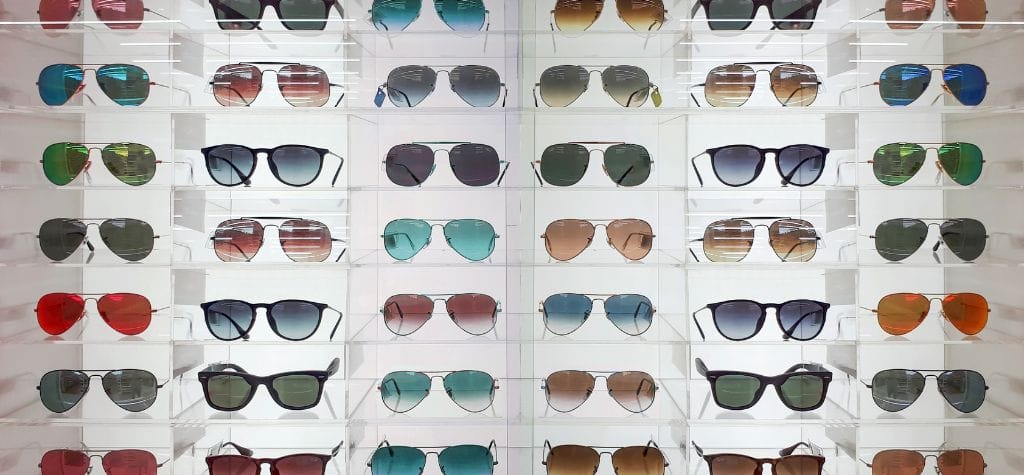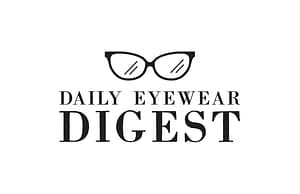The Evolution of Eyewear Pricing

From Necessity to Luxury
Glasses were once a purely functional tool—an essential aid for clear sight. Today, they’re both a vision correction device and a personal fashion statement. As eyewear became entwined with identity and style, prices followed suit, transforming from necessity-level costs into luxury-tier spending.
Eyewear’s Journey Through the Decades
From wartime metal frames to 1980s designer labels and now sustainable materials, the price of glasses has kept pace with cultural evolution. Yet even with tech improvements and mass production, prices remain steep. Why?
The Role of Big Corporations in Price Control
Eyewear Industry Consolidation Explained
One of the key reasons glasses remain costly is the concentration of market power. A few corporations dominate the global eyewear industry. These giants control everything—from frame design and lens production to retail outlets and insurance networks—limiting competition and keeping prices artificially high.
How Monopolies Drive Up Costs
With fewer players in control, there’s little pressure to reduce prices. Even when production costs drop, retail prices stay inflated. The eyewear industry’s vertical integration—where a single company owns the supply chain from lens labs to storefronts—means consumers face limited options and consistent markups.
Brand Perception vs. Actual Value
Are Designer Frames Worth It?
Designer logos can easily double or triple the price of a pair of glasses. Yet many “designer” frames are produced in the same factories as unbranded ones. What you’re often paying for is marketing, brand cachet, and packaging—not superior materials.
Psychology Behind Paying More
Luxury pricing taps into our desire for identity and status. Wearing Gucci or Prada frames signals taste and wealth. But from a utility perspective, many mid-tier brands offer equal, if not better, functionality at a fraction of the cost.
What Goes Into the Cost of Glasses?
Frame Design and Materials
High-end frames may feature titanium, acetate, or other durable, hypoallergenic materials. But many budget brands use similar materials. Style tweaks and brand prestige tend to drive most price differences.
Lens Technology and Coatings
This is where real value often lies. Premium lenses offer sharper clarity, UV protection, blue light filtering, and anti-glare coatings. Customizations can significantly raise the base cost, especially for progressives or photochromic lenses.
Manufacturing and Quality Control
Frames go through cutting, shaping, coloring, and testing before reaching your face. Better brands invest in meticulous craftsmanship—but not all expensive glasses reflect that behind-the-scenes care.
Retail Markups: The Silent Price Inflator

How Much Are You Really Paying For?
It’s not uncommon for glasses that cost $20–$40 to produce to retail for $300 or more. That difference covers marketing, storefronts, staff salaries, and profit margins—none of which enhance your vision.
Why Middlemen Matter
Traditional eyewear sales involve distributors, wholesalers, and retailers—each adding a markup. Direct-to-consumer brands like Radiella eliminate these middlemen, offering premium glasses at fair prices.
The Optical Insurance Puzzle
Do Vision Plans Help or Hurt?
Vision insurance may seem like a cost-saver, but it can often lock customers into a narrow set of providers and frames. These limitations can actually increase out-of-pocket costs—especially if you want style or quality beyond the “covered” options.
Hidden Costs in Insurance Coverage
Many plans offer low reimbursement caps, meaning you’re still footing most of the bill. Add-ons like anti-reflective coatings or thin lenses may not be covered at all.
Online Retail Disruption and Its Limits
The Rise of Budget-Friendly Online Stores
Web-based retailers like Zenni Optical and EyeBuyDirect have disrupted the market with stylish, low-cost options. They succeed by skipping traditional markups, offering virtual try-ons, and focusing on high volume.
Why Online Eyewear Still Has Challenges
Poor frame fit, incorrect PD measurements, and limited customer support are downsides. Returns can be tricky, and glasses bought online don’t always match up to their advertised comfort or style.
Hidden Costs You Might Not See
Returns, Restocking, and Shipping
Low upfront prices can hide costly return fees or inflexible policies. Always read the fine print before buying, especially when ordering internationally.
Lens Customizations and Add-Ons
A $49 pair of glasses can balloon past $150 after adding high-index lenses, coatings, and transitions. Transparency in pricing is key—a practice embraced by brands like Radiella.
Are Expensive Glasses Really Better?

Durability and Longevity vs. Price
While some premium frames are genuinely more durable, many mid-range frames offer similar lifespans when cared for properly. If you’re paying more, make sure it’s for features that directly impact your vision or comfort.
When You Should Splurge
- Complex prescriptions (e.g., progressive, bifocal)
- Ultra-lightweight or hypoallergenic frames
- Daily all-day use where comfort matters most
Sustainable and Affordable Alternatives
The Rise of Ethical Eyewear
Today’s consumers want more than style—they want values. Brands that prioritize the planet and people are gaining traction, offering eyewear that’s both affordable and ethical.
Spotlight: Radiella’s Affordable Eco-Luxury
At Radiella, eyewear is crafted to deliver fashion, function, and environmental responsibility. Their use of eco-friendly materials and energy-efficient manufacturing reduces waste while providing long-lasting, stylish frames.
- Extended warranties back every purchase, proving their commitment to quality
- Designs span minimalist chic to bold, trendy statements
- All frames reflect Radiella’s mission: “Style and conscious living coexist beautifully.”
Explore the full collection at www.radiella.com
How to Shop Smart and Save
Tips for Buying Glasses Without Overspending
- Use your current prescription, if still valid
- Compare prices across platforms
- Choose budget frames and invest in high-quality lenses
- Don’t pay for extras you don’t need
Questions to Ask Your Optician
- Are there comparable, less expensive frame options?
- Which coatings do I really need?
- What’s covered under warranty?
The Future of Eyewear Pricing

Will Prices Drop With Technology?
Advancements in 3D printing, AI-powered measurements, and sustainable materials may gradually reduce production costs. But without pressure from informed consumers, retail prices may not follow.
Trends Shaping Tomorrow’s Eyewear Market
- Rise of DTC (Direct-to-Consumer) brands
- Growth of sustainable fashion in optics
- Expansion of virtual eyewear experiences
- Demand for transparent pricing
FAQs About Eyewear Costs
Q1: Why are glasses at the eye doctor so expensive?
They include markups for rent, staff, and brand partnerships—costs you avoid with online or direct-to-consumer brands.
Q2: Is it safe to buy cheap glasses online?
Yes, if you know your prescription and order from a trusted source like Radiella or Zenni.
Q3: Why do lenses cost more than frames?
Lens complexity, material, and coatings increase the price far beyond simple plastic frames.
Q4: Are luxury glasses really made better?
Sometimes. But often, you’re paying for branding, not better materials.
Q5: What’s a fair price for prescription glasses?
$80–$150 for good-quality glasses, with lenses included, is very reasonable.
Q6: How often should I replace my glasses?
Every 1–2 years, or when your prescription or style preferences change.
Conclusion: Cutting Through the Cost Confusion
Eyewear doesn’t have to be outrageously expensive. While industry consolidation, brand inflation, and hidden markups keep prices high, consumers have more options than ever. Brands like Radiella are paving the way—offering eco-luxury frames that combine affordability, sustainability, and style.
The key to smarter eyewear shopping? Stay informed, demand transparency, and choose brands that align with your values.

